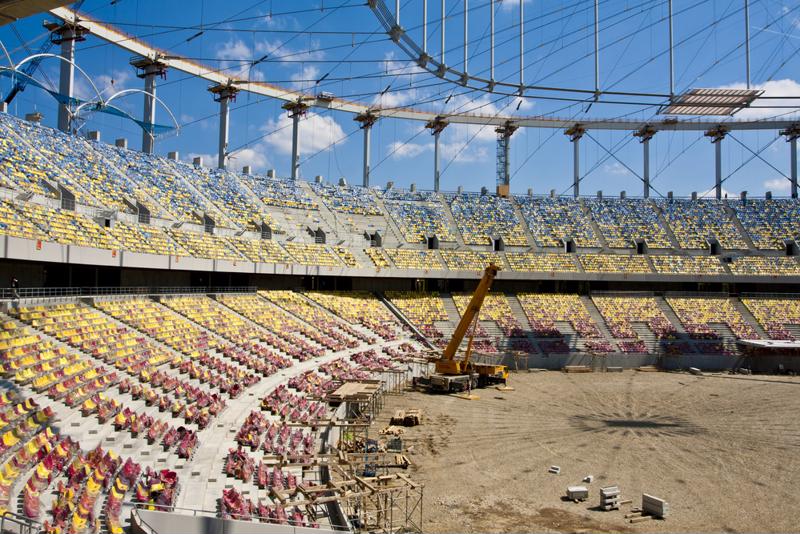Athletic stadiums serve as some of the largest venues in America, but they can be expensive to operate. The average maximum capacity of NFL stadiums is 69,636, according to Stadiums of Pro Football. While this is only a figure for NFL stadiums, it stands to reason that most venues in the world are about this size. That's a whole lot of people using the bathroom over the course of just a few hours.
Stadiums that switch to a tankless water heater can save money on utility bills, ensure hot water for their fans and avoid needless litigation.
Making money by saving
Having to provide hot water to over 60,000 people can put a strain on any system, especially if that system is dependent on storage water heaters. Storage water heaters typically have an energy factor of 0.55-0.65. This rating shows how efficiently the system uses the energy that runs it. A lower energy factor means that it takes, and wastes, more resources to operate. Electric tankless water heaters sport a 0.99 energy factor, meaning that it is highly effective at using resources to supply hot water. It doesn't take a rocket scientist to realize that a system with a higher energy factor will use less energy, and cost stadium owners less money on their utility bill.
Point-of-use electric tankless water heaters can take the strain off of a system as well, which staves off unavoidable routine maintenance. Putting them under a sink will lessen the pressure of use on the whole stadium. Federal rebates are available for stadiums that want to install these, and can save as much as 30 percent of the cost for installation, according to the Department of Energy.
Installing low-flow faucets on sinks can further increase the amount of money saved on utility bills, as it reduces pressure on a sink that on average puts out 2.5 gallons per minute to around 1 gpm.
 Switching to tankless can save money on the costly renovations needed for storage water heaters to stay up to code.
Switching to tankless can save money on the costly renovations needed for storage water heaters to stay up to code.Avoid legal battles
Stadiums cater to families, and young children and older adults are the most susceptible to scalds. According to the American Burn Association, 34 percent of admissions to burn centers between 2003-2013 were because of scalds. Storage water heaters can spike water temperatures at the faucet, and it only require takes 5 seconds of exposure to 140 degree Fahrenheit water temperature to cause a third degree burn, the ABA pointed out. This can be nerve-wracking, because it means that at any moment a storage water heater could give out and inflict a preventable injury on someone's child or grandparent.
Electric tankless water heaters use thermo optical sensors to figure out when water needs to be heated, and also keep it at the correct temperature. Going tankless lets stadium owners relax knowing that on any given day, water won't spike at the faucet leaving a fan seriously injured. Give fans the peace of mind, knowing that they don't have to test the temperature of the water before they turn on the sink.

